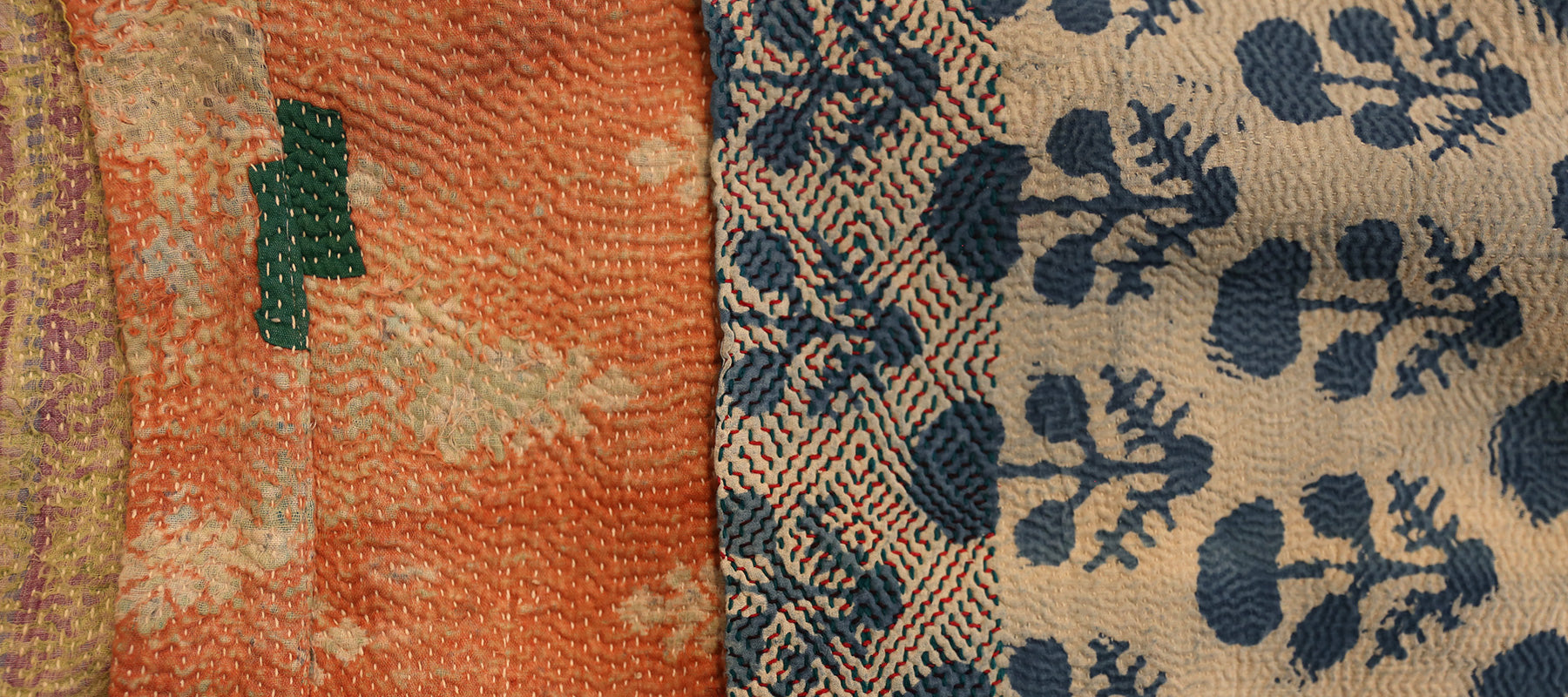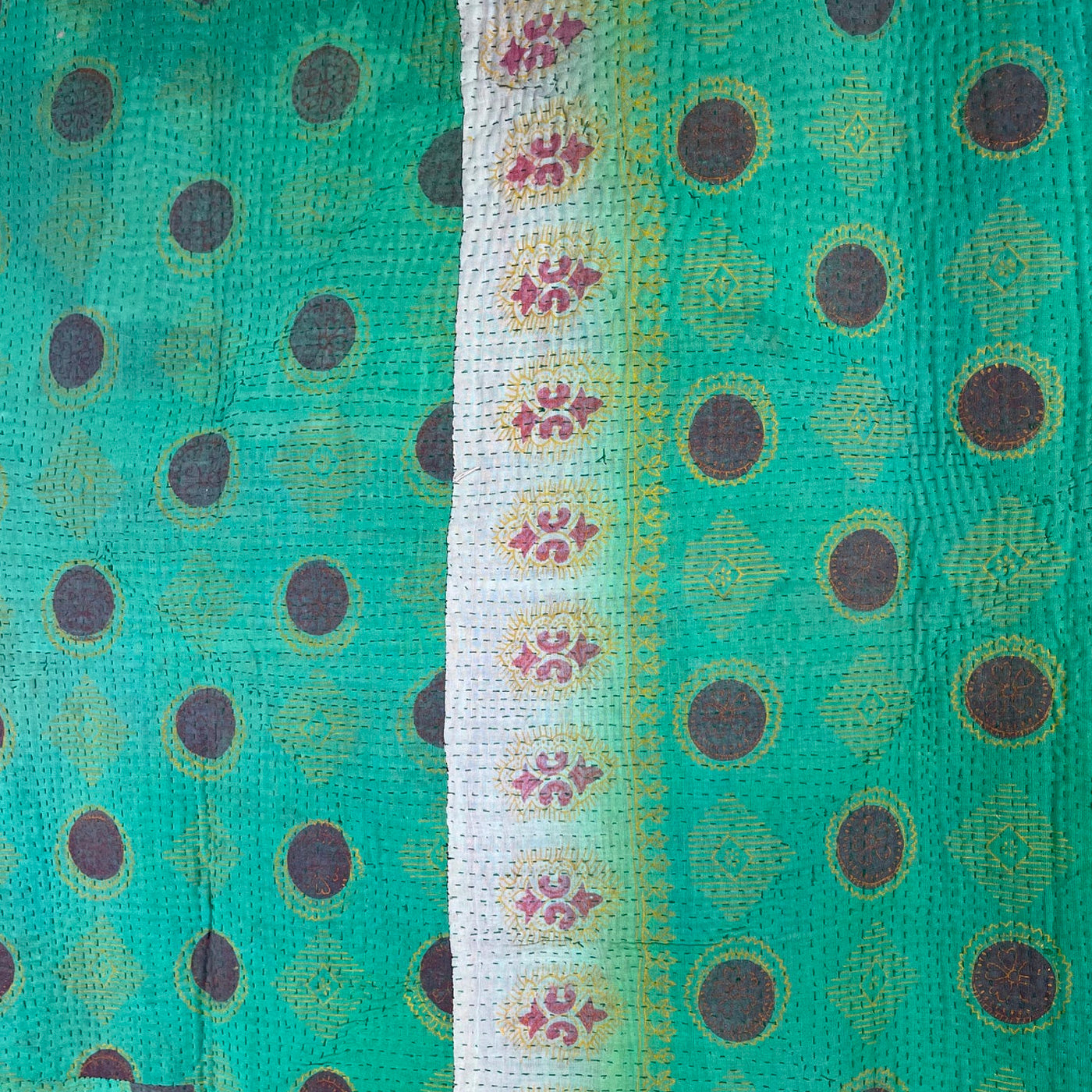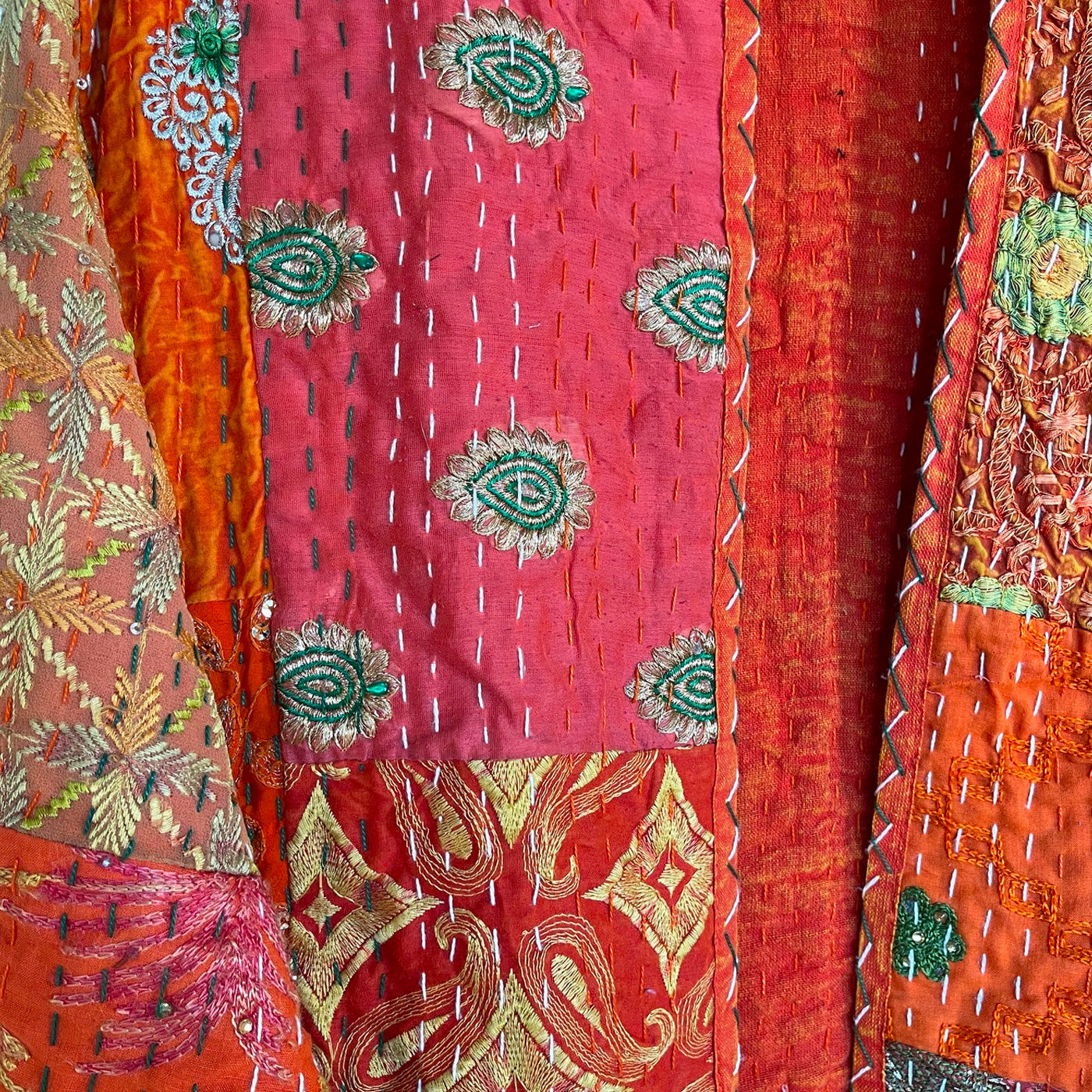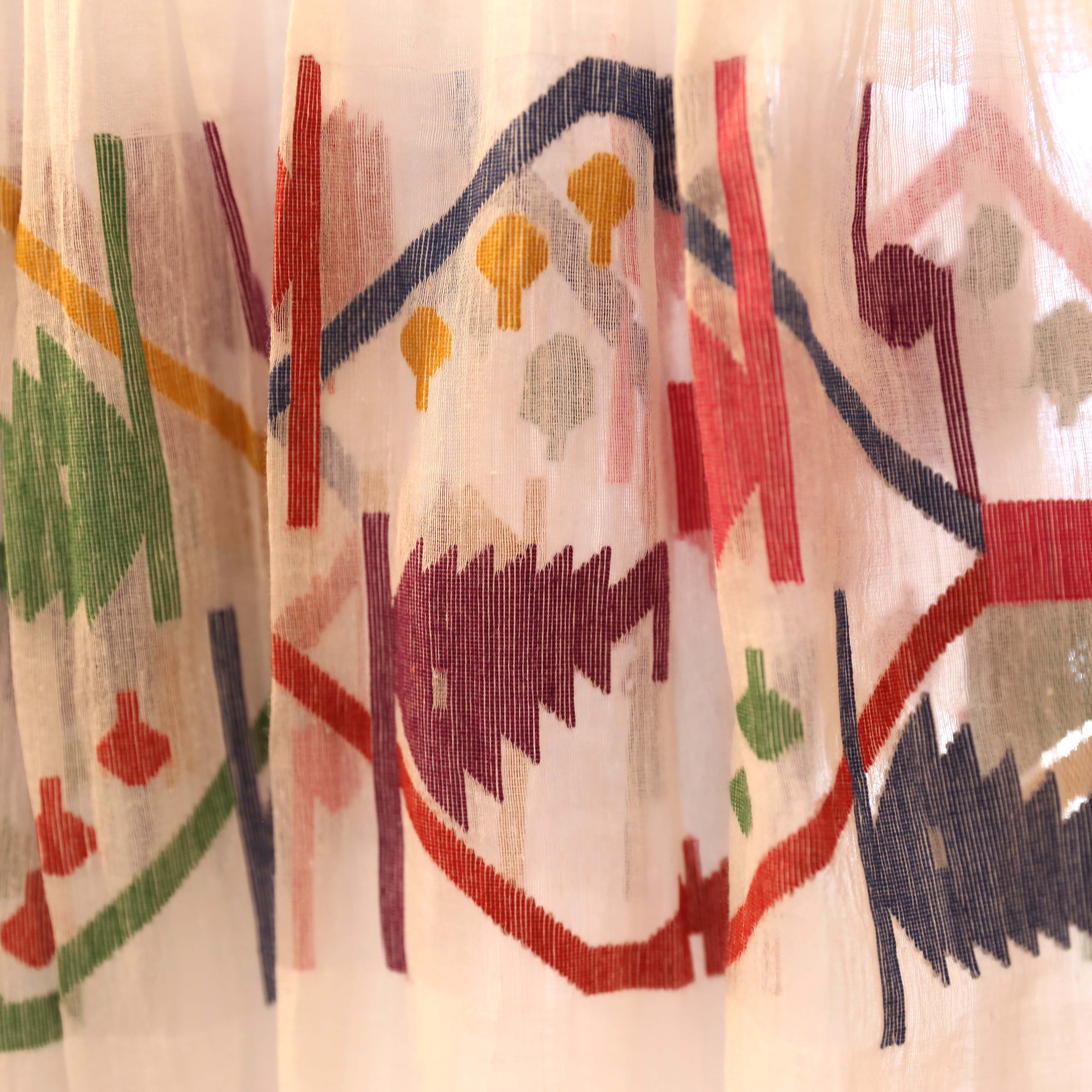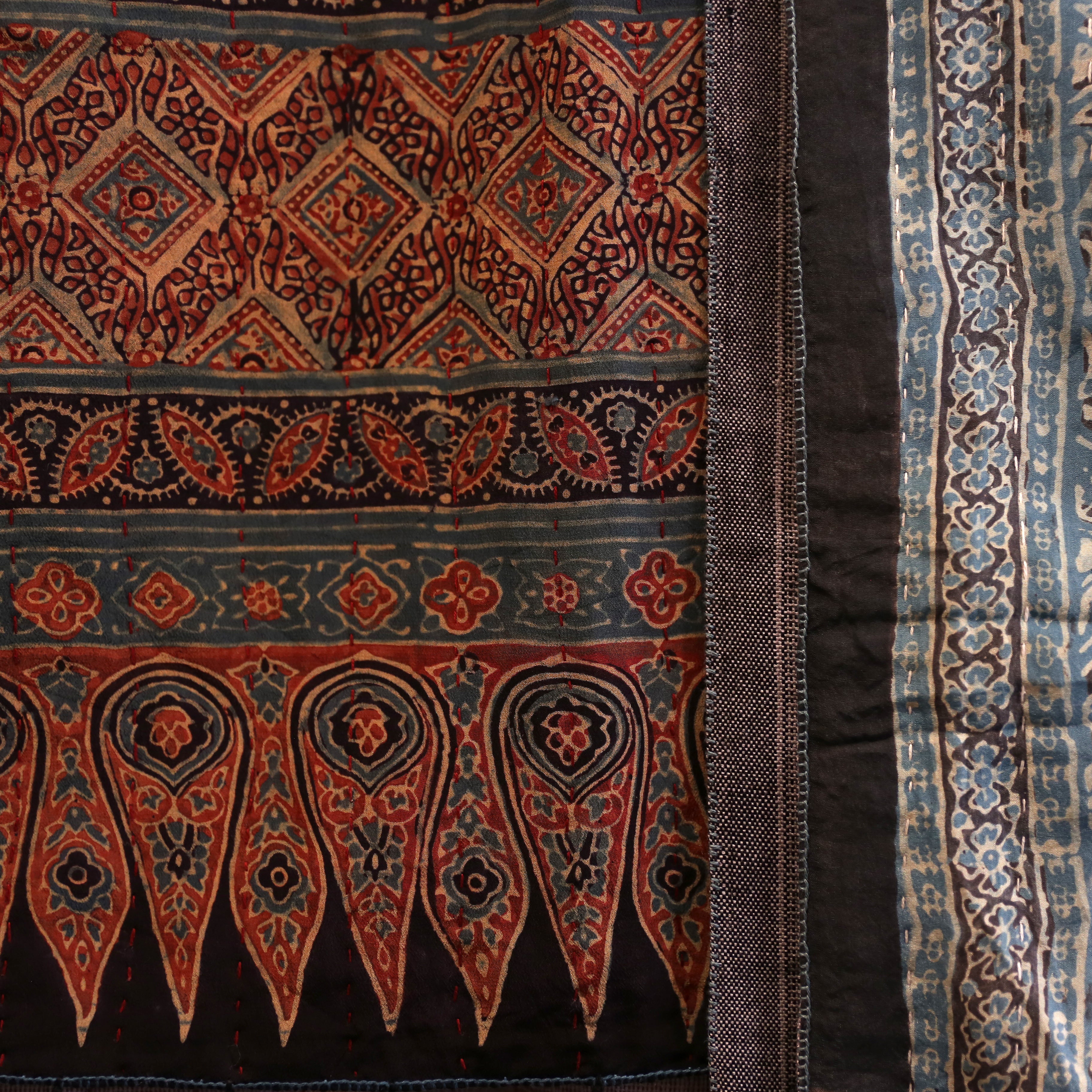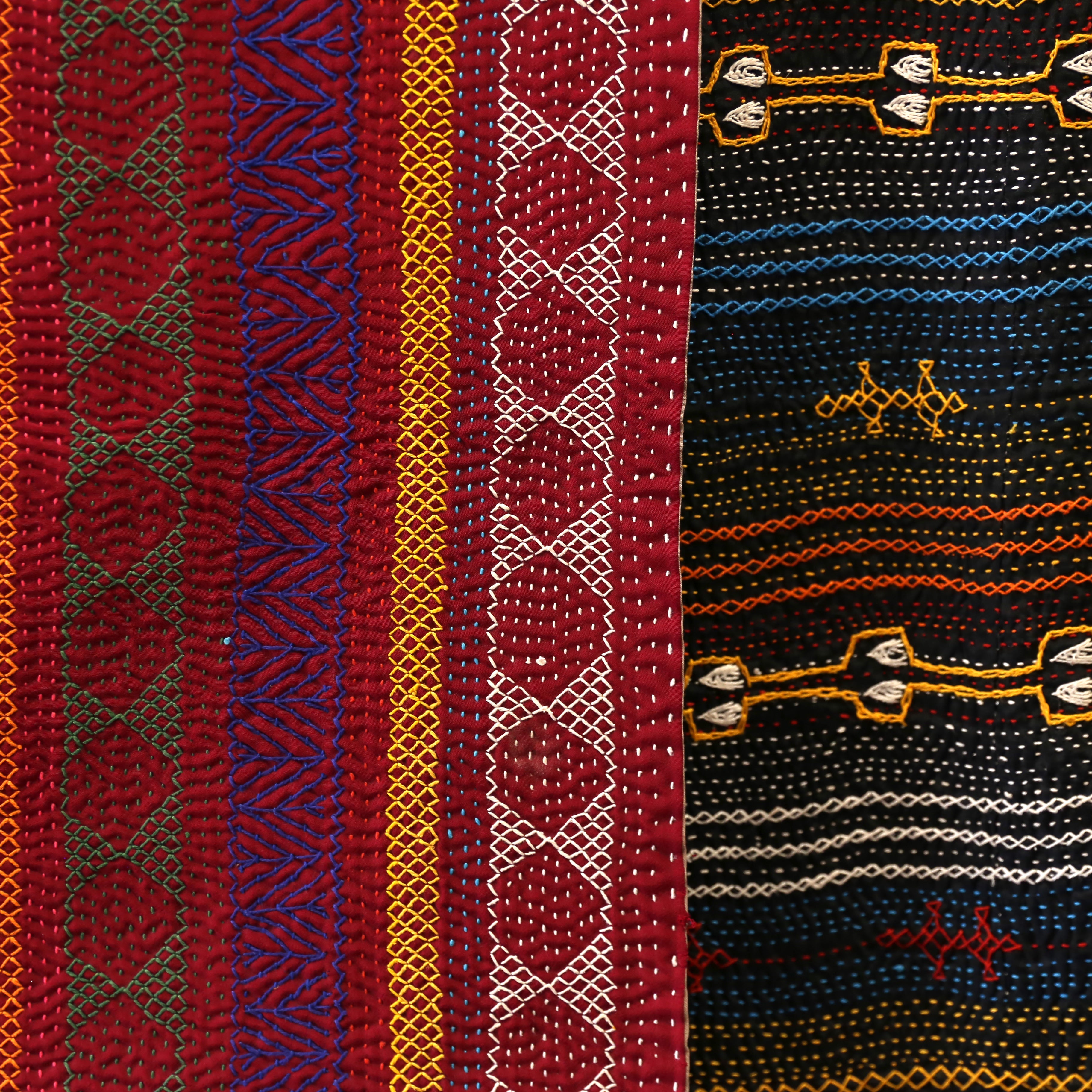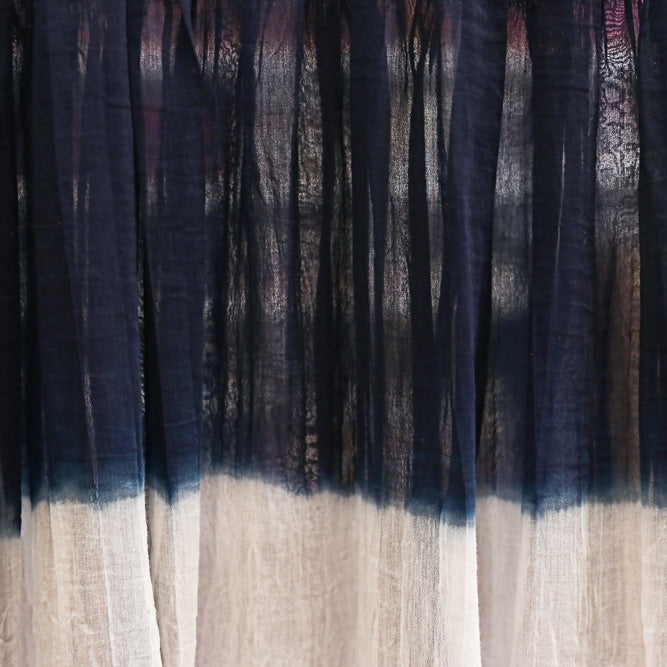Stitched ⋮ Kantha
VINTAGE KANTHA
"Kantha" refers to both the style of running stitch, as well as the finished cloth. It was a craft that was practiced by women of all rural classes, passed down in learning and dowry from mother to daughter. In modern usage, kantha more generally refers specifically to the type of stitch used - the earliest and most basic kantha stitch being a simple, straight, running stitch.
Kantha is a centuries-old tradition of stitching patchwork cloth from rags, (translated from Sanskrit, Kantha means 'rags'), which evolved from the thrift of rural women in the Bengali region of the sub-continent - today the eastern Indian states of West Bengal and Orissa, and Bangladesh. One of the oldest forms of embroidery originating from India, its origins can be traced back to the pre-Vedic age (prior to 1500 BCE).
The original quilts would have been made by mothers and grandmothers for members of their family out of old scraps of clothing. The authentic Kantha quilt is vintage by nature, created from saris which are no longer worn. The usable pieces of cloth are pieced together to create patchworked layers of bedspread size cloth.
Women in almost every household in rural villages would be kantha experts, and spend whatever quiet time they had available - between looking after the house and children, tending to livestock and during the long days of the monsoon - on stitching the pieces. It could take months or even years to complete one kantha. The stitching could be handed down through generations, with grandmother, mother and daughter working on the same kantha.
Traditionally, kantha was an intimate and utilitarian item, made over a long period of time for use by the family; every family in Bengal had a number of kanthas for personal use. The majority of kantha was used as light coverlets during the mild Bengali winters and breezy monsoon nights.
Another early use was for swaddling babies. Expectant mothers would spend the last months of their pregnancy stitching the cloth, in the belief that it would bring good fortune to their families and and protect the baby from diseases. Other kanthas were specifically created in different sizes for use as satchels or purses, as floor covers for special guests, to store personal items, to cover the Quran or use as prayer mats, or as pillow covers.
The saris used in the kantha blankets would have been hung out to dry, over months or even years, in the Indian sunshine. Cotton doesn’t hold its colour as well as synthetics or silk might, so the fabric of your quilt is likely to be faded. This gives it the look of a family heirloom and only adds to its charm.
Part and parcel of preloved fabric is that it will have lived a life before becoming a kantha quilt. You may find areas which have been worn more than others, though the fabric will not be completely worn through or physically torn. The blankets are made by layering fabric, so in areas where the fabric has thinned, you will have the additional layers underneath peeking through, this adds to the character (and the softness) of a vintage blanket.
If a preloved sari has a small tear, the cloth is simply patched before being used within the vintage kantha quilt.
Reduce, reuse, recycle
Rags have long been believed to hold special powers. Sewing pieces of fabric together was believed to endow the pieced cloth with spiritual power. In many cultures it is believed that patchwork and pieced quilts made from peoples clothes, transferred energy between generations, the dead and the living, mother and child, creating a collective human power, each salvaged piece transmitting its own force of identity
Layers of cloth stitched together are thought to strengthen connection. Kanthas, the quilted and embroidered cloths of Bangladesh, are traditionally crafted from uncut cloth. Seamless, they prevent the entry of evil sprits, layered, they trap greater psychic force. From used materials such as the unpicked fabric and unravelled thread of old saris and dhotis (mens garments), each reclaimed cloth was traditionally laid one on top of another, enduring a combined connected force. The layers were sewn through with tiny running stitches - an anti of restorative restitution, and linking generations in a combined amplified strength.
(Loosely from Claire Hunter - Threads of Life)
NEW KANTHA
Kanthas are still made today, but for the tourist market, made from new fabric - simplified and to some degree, impersonal; still beautiful interior design pieces, but possibly lacking the emotional investment. In turning to new cloth, untouched by others, have we lost the concept of directly connecting to our ancestors by using their garments to endow us with the residue of their spirit?
If you travel in Bengal today, you will still find modern iterations of the traditional patchwork kantha quilts; airing in the sun on verandahs in Kolkata or laid out over paddy fields in the villages to dry. But the bulk of kantha production is made for commercial consumption - both domestically in India and Bangladesh, and for the export market. This, in theory, is a good thing - the rural women of Bengal, who are limited by economic, cultural, social and religious factors from finding gainful employment outside of their homes now find themselves in high demand to produce enough kantha for this market.
SLOW FASHION + ENVIRONMENTAL SUSTAINABILITY
The issue of waste created by our modern throwaway culture is making headline news, The textile industry is the world’s second most polluting sector, lesser only than the oil industry. It’s never been more important to ask questions about what we’re buying and find ways to reuse the textiles which are already in circulation.
As with all traditional textiles, kantha was influenced by external factors such as material availability, daily needs, climate, geography and economic factors. Historically, textile production was one of the most labour-intensive industries, and as such, textiles were highly valued. Thus, the recycling of well used cloth-turned-rags was a natural step in the lifecycle of textiles the world over. Given that this recycling was home-based work, it usually fell to the women of the village to prepare, cut and stitch the rags - giving old textiles new life.
Traditionally, old cotton saris, lungis and dhotis, which had turned incredibly soft through wear, were used to make kanthas, with the thread for the stitching drawn out from the fabric itself. Recycling at its best; in fact, the upcycling of fabrics has been happening for centuries. Replacing garments on a regular basis is a modern trend, in our grandparents’ time everyone knew how to patch and repair. While we may be losing this skill, it is an art that hasn’t been lost in rural Indian villages.
Reference sources:
House of Wandering Silk
Threads of Life by Clare Hunter. Sceptre 2019

